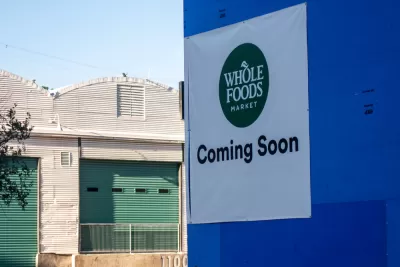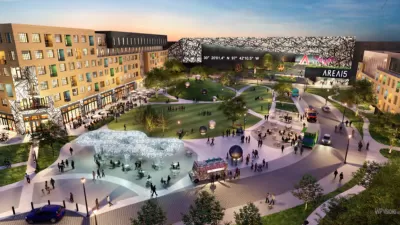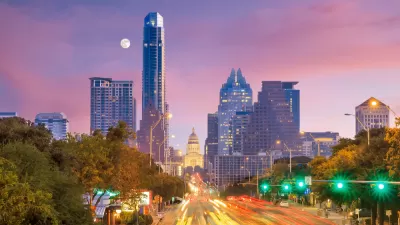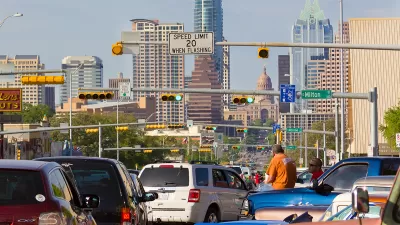The Texas state capital’s “right to return” law was delayed by the pandemic, but Austin is now taking applications for longtime low-income residents to find housing in gentrifying neighborhoods.

“The City of Austin says it will give people from gentrifying neighborhoods priority in the application process for more than two dozen homes it's selling to low-income families,” reports Audrey McGlinchy for KUT.
“This is the first time the city plans to use what it calls a ‘preference policy,’ which was approved by council members in 2018,” according to McGlincy. Planetizen shared news of the new policy in September 2021, when the city identified a development site for the program. The deployment of the law, originally intended for late 2019, was delayed by the pandemic.
“To benefit from the program, people first need to be making less than Austin's family median income; for a single-person household that amounts to $69,250 a year,” according to McGlinchy. “Additionally, people need to prove they've been affected by gentrification or that they have generational ties to the city. That can mean they live or have lived — as far back as 2000 — in a neighborhood in the process of gentrifying; that's the process in which wealthy people move to a historically middle- or low-income neighborhood and housing costs rise.”
A study published in 2018 by researchers from the University of Texas is informing the city’s assessment of gentrification around the city.
More details on the new right to return law and the properties available in this first wave of applications can be found in the source article below.
FULL STORY: Austin says it will sell city-owned property to families affected by gentrification

Manufactured Crisis: Losing the Nation’s Largest Source of Unsubsidized Affordable Housing
Manufactured housing communities have long been an affordable housing option for millions of people living in the U.S., but that affordability is disappearing rapidly. How did we get here?

Americans May Be Stuck — But Why?
Americans are moving a lot less than they once did, and that is a problem. While Yoni Applebaum, in his highly-publicized article Stuck, gets the reasons badly wrong, it's still important to ask: why are we moving so much less than before?

Using Old Oil and Gas Wells for Green Energy Storage
Penn State researchers have found that repurposing abandoned oil and gas wells for geothermal-assisted compressed-air energy storage can boost efficiency, reduce environmental risks, and support clean energy and job transitions.

Greening Oakland’s School Grounds
With help from community partners like the Trust for Public Land, Oakland Unified School District is turning barren, asphalt-covered schoolyards into vibrant, green spaces that support outdoor learning, play, and student well-being.

California Governor Suspends CEQA Reviews for Utilities in Fire Areas
Utility restoration efforts in areas affected by the January wildfires in Los Angeles will be exempt from environmental regulations to speed up the rebuilding of essential infrastructure.

Native American Communities Prepare to Lead on Environmental Stewardship
In the face of federal threats to public lands and conservation efforts, indigenous groups continue to model nature-centered conservation efforts.
Urban Design for Planners 1: Software Tools
This six-course series explores essential urban design concepts using open source software and equips planners with the tools they need to participate fully in the urban design process.
Planning for Universal Design
Learn the tools for implementing Universal Design in planning regulations.
Heyer Gruel & Associates PA
City of Moreno Valley
Institute for Housing and Urban Development Studies (IHS)
City of Grandview
Harvard GSD Executive Education
Salt Lake City
NYU Wagner Graduate School of Public Service
City of Cambridge, Maryland





























